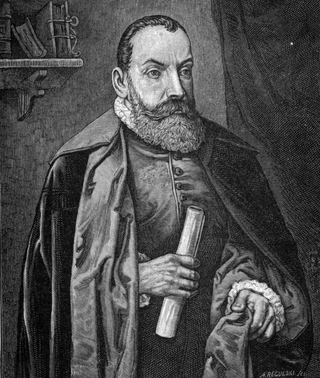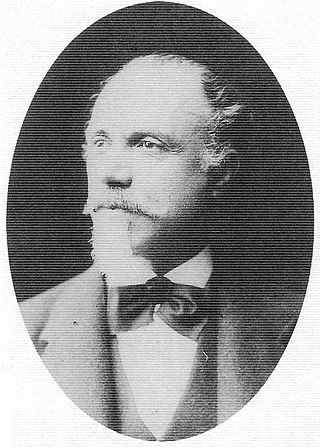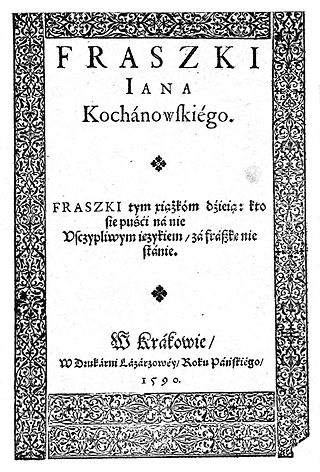
Seamus Justin Heaney was an Irish poet, playwright and translator. He received the 1995 Nobel Prize in Literature. Among his best-known works is Death of a Naturalist (1966), his first major published volume. Heaney was and is still recognised as one of the principal contributors to poetry in Ireland during his lifetime. American poet Robert Lowell described him as "the most important Irish poet since Yeats", and many others, including the academic John Sutherland, have said that he was "the greatest poet of our age". Robert Pinsky has stated that "with his wonderful gift of eye and ear Heaney has the gift of the story-teller." Upon his death in 2013, The Independent described him as "probably the best-known poet in the world".

An elegy is a poem of serious reflection, and in English literature usually a lament for the dead. However, according to The Oxford Handbook of the Elegy, "for all of its pervasiveness ... the 'elegy' remains remarkably ill defined: sometimes used as a catch-all to denominate texts of a somber or pessimistic tone, sometimes as a marker for textual monumentalizing, and sometimes strictly as a sign of a lament for the dead".

David's Psalter is a poetic translation into Polish of the Book of Psalms, by Jan Kochanowski, the most prominent poet of the Polish Renaissance. It was printed in 1579 in Kraków, at the Lazarus printing house.

Jan Kochanowski was a Polish Renaissance poet who wrote in Latin and Polish and established poetic patterns that would become integral to Polish literary language. He has been called the greatest Polish poet before Adam Mickiewicz and one of the most influential Slavic poets prior to the 19th century.

A lament or lamentation is a passionate expression of grief, often in music, poetry, or song form. The grief is most often born of regret, or mourning. Laments can also be expressed in a verbal manner in which participants lament about something that they regret or someone that they have lost, and they are usually accompanied by wailing, moaning and/or crying. Laments constitute some of the oldest forms of writing, and examples exist across human cultures.

A threnody is a wailing ode, song, hymn or poem of mourning composed or performed as a memorial to a dead person. The term originates from the Greek word θρηνῳδία (threnoidia), from θρῆνος and ᾠδή, the latter ultimately from the Proto-Indo-European root *h₂weyd- that is also the precursor of such words as "ode", "tragedy", "comedy", "parody", "melody" and "rhapsody".

Stanisław Barańczak was a Polish poet, literary critic, scholar, editor, translator and lecturer. He is perhaps most well known for his English-to-Polish translations of the dramas of William Shakespeare and of the poetry of E.E. Cummings, Elizabeth Bishop, Emily Dickinson, Wystan Hugh Auden, Seamus Heaney, Thomas Hardy, Gerard Manley Hopkins, Thomas Stearns Eliot, John Keats, Robert Frost, Edward Lear and others.

The Renaissance in Poland lasted from the late 15th to the late 16th century and is widely considered to have been the Golden Age of Polish culture. Ruled by the Jagiellonian dynasty, the Crown of the Kingdom of Poland actively participated in the broad European Renaissance. The multinational Polish state experienced a period of cultural growth thanks in part to a century without major wars, aside from conflicts in the sparsely-populated eastern and southern borderlands. The Reformation spread peacefully throughout the country, and living conditions improved, cities grew, and exports of agricultural products enriched the population, especially the nobility (szlachta), who gained dominance in the new political system of Golden Liberty.
Nationality words link to articles with information on the nation's poetry or literature.
Nationality words link to articles with information on the nation's poetry or literature.

Mikołaj Sęp Szarzyński was an influential Polish poet of the late Renaissance who wrote in both Polish and Latin. He was a pioneer of the Baroque and the greatest representative of the metaphysical movement of the era in Poland. His love poems are often classed as mannerist. Jan Błoński has called Sęp Szarzyński a "mystical poet full of abstraction", and Wiktor Weintraub has called him "the most outstanding poet of the times of Jan Kochanowski". The poet's status in the history of Polish literature is controversial.
The pastoral elegy is a poem about both death and idyllic rural life. Often, the pastoral elegy features shepherds. The genre is actually a subgroup of pastoral poetry, as the elegy takes the pastoral elements and relates them to expressing grief at a loss. This form of poetry has several key features, including the invocation of the Muse, expression of the shepherd's, or poet's, grief, praise of the deceased, a tirade against death, a detailing of the effects of this specific death upon nature, and eventually, the poet's simultaneous acceptance of death's inevitability and hope for immortality. Additional features sometimes found within pastoral elegies include a procession of mourners, satirical digressions about different topics stemming from the death, and symbolism through flowers, refrains, and rhetorical questions. The pastoral elegy is typically incredibly moving and in its most classic form, it concerns itself with simple, country figures. In ordinary pastoral poems, the shepherd is the poem's main character. In pastoral elegies, the deceased is often recast as a shepherd, despite what his role may have been in life. Further, after being recast as a shepherd, the deceased is often surrounded by classical mythology figures, such as nymphs, fauns, etc. Pastoral elegy is one of the forms of poems in Elizabethan poetry.

Human Chain is the twelfth and final poetry collection by Seamus Heaney. It was first published in 2010 by the Faber and Faber.

Piotr Antoni Wilczek is a Polish intellectual historian, a specialist in comparative literature and a literary translator, who served as the Ambassador of Poland to the United States (2016–2021) and the United Kingdom.

Felicjan Medard Faleński was a Polish poet, playwright, prosaist and translator.

Anna Stanisławska was a Polish author and poet known for her sole work Transakcja albo opisanie całego życia jednej sieroty przez żałosne treny od tejże samej pisane roku 1685, translated as Transaction, or a Description of the Entire Life of One Orphan Girl Through Doleful Laments Written by the Same 1685. The unpublished manuscript was discovered in a public library in St. Petersburg nearly two centuries later, in 1890, by Slavic studies professor Aleksander Brückner, who declared Stanisławska to be the earliest known Polish woman poet. The work was finally printed in 1935.
The Sapphic stanza is the only stanzaic form adapted from Greek and Latin poetry to be used widely in Polish literature. It was introduced during the Renaissance, and since has been used frequently by many prominent poets. The importance of the Sapphic stanza for Polish literature lies not only in its frequent use, but also in the fact that it formed the basis of many new strophes, built up of hendecasyllables and pentasyllables.
Sally Connolly, is a writer and academic.

Fraszki is the 1584 three-book collection of 294 short, merry poems by Jan Kochanowski. They were written mostly during Kochanowski's courtier period, in the 1560s and 1570s. That work has been described as among his most popular, and spawned many imitators in Poland.

Opened Ground: Poems 1966–1996 is a 1998 poetry collection by Seamus Heaney, published by Faber and Faber. It was published to replace his earlier 1990 collection titled New Selected Poems 1966–1987, including poems from said collection and later poems published after its release.















